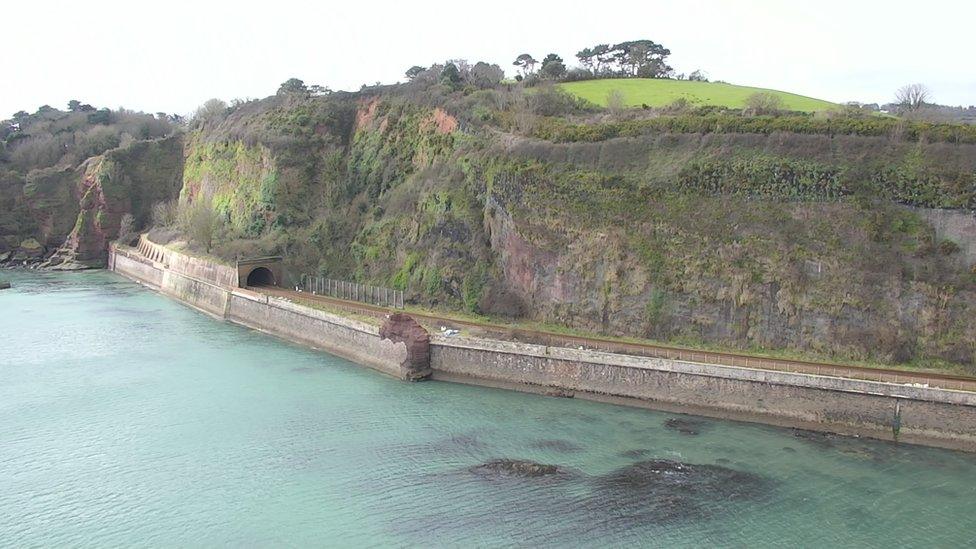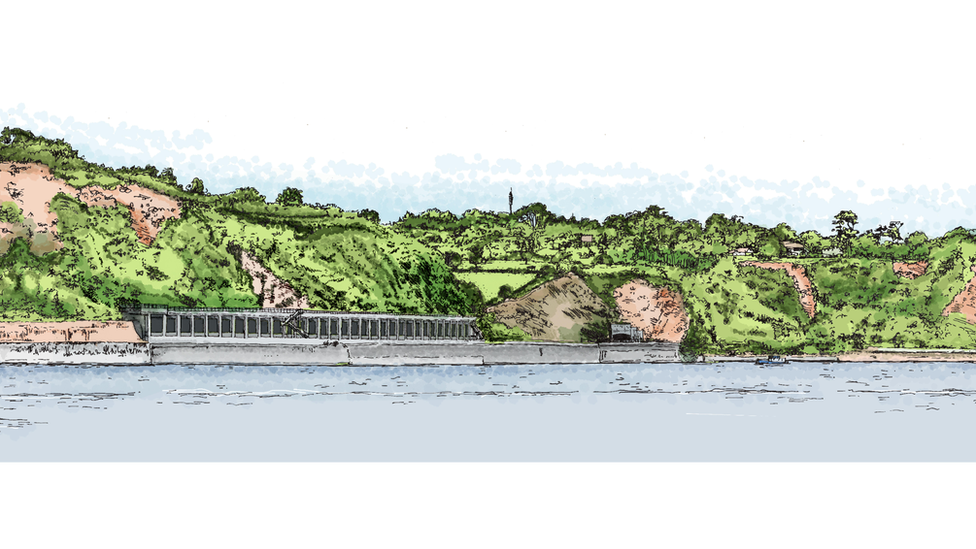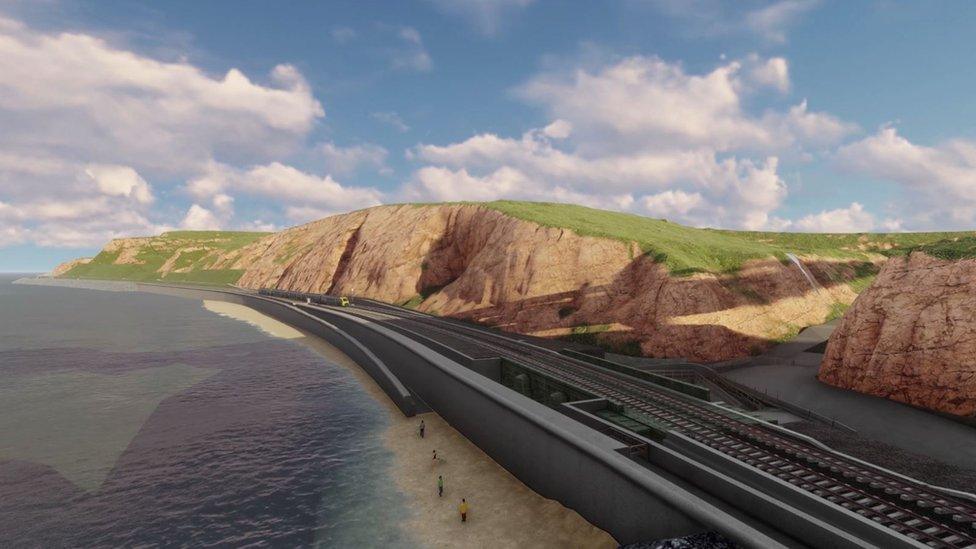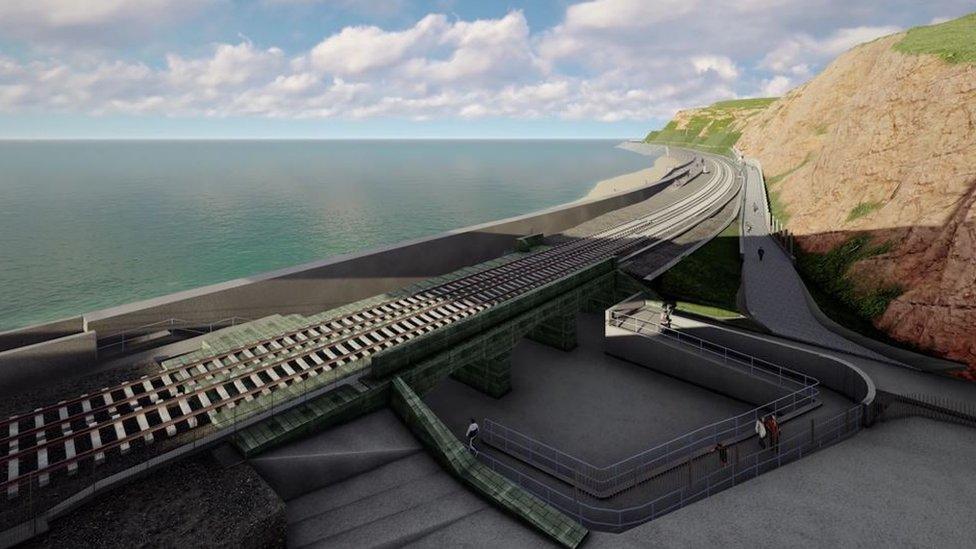Rock fall shelter on rail line near Dawlish gets funding
- Published

The stretch of rail line north of Parsons Tunnel is vulnerable to rock falls
Plans to build a rock fall shelter over a vulnerable stretch of coastal rail line have been given more than £37m in government funding.
The 209m (686ft) shelter extension will be built north of Parsons Tunnel between Dawlish and Holcombe in Devon.
It is hoped it will help keep the rail line connecting the South West with the rest of the country open.
Network Rail said the "critical structure" will "protect the railway in Devon for the next 100 years".

Rail lines were left dangling after storm damage in nearby Dawlish in 2014
The track in south Devon is vulnerable to large waves, as well as rock falls.
The main line near Dawlish in Devon collapsed and was washed into the sea during storms in February 2014.
The Department for Transport said construction on the shelter is expected to start in August and last for a year.
A previous proposal involved moving part of the railway line between Holcombe and Teignmouth further out to sea to avoid cliff falls but those plans have been delayed following a large public response.

Network Rail are extending the rock fall shelter to help keep the line open in bad weather
Councillor Andrea Davis, Chair of Peninsula Rail Task Force (PRTF), said: "The line at Dawlish is a vital link between the Peninsula and the rest of the UK and the rock fall shelter is an important element in ensuring people can continue to travel across the peninsula safely and reliably."
She said the line was "vital to the economic success of the region" and the shelter was the next phase of the South West Resilience Programme at Dawlish.
Ewen Morrison, from Network Rail's South West Rail Resilience Programme, said: "This coastal stretch of railway is beautiful but also faces a number of vulnerabilities either side of the railway; rough sea conditions on one side can cause flooding whilst steep cliffs on the other side make the railway at risk of rock falls and landslides."
He added: "We're looking forward to getting started and are excited by the engineering challenge of building such a critical structure in such an inaccessible location whilst minimising the impact on train services."
Related topics
- Published10 June 2019

- Published20 January 2020

- Published14 October 2020
